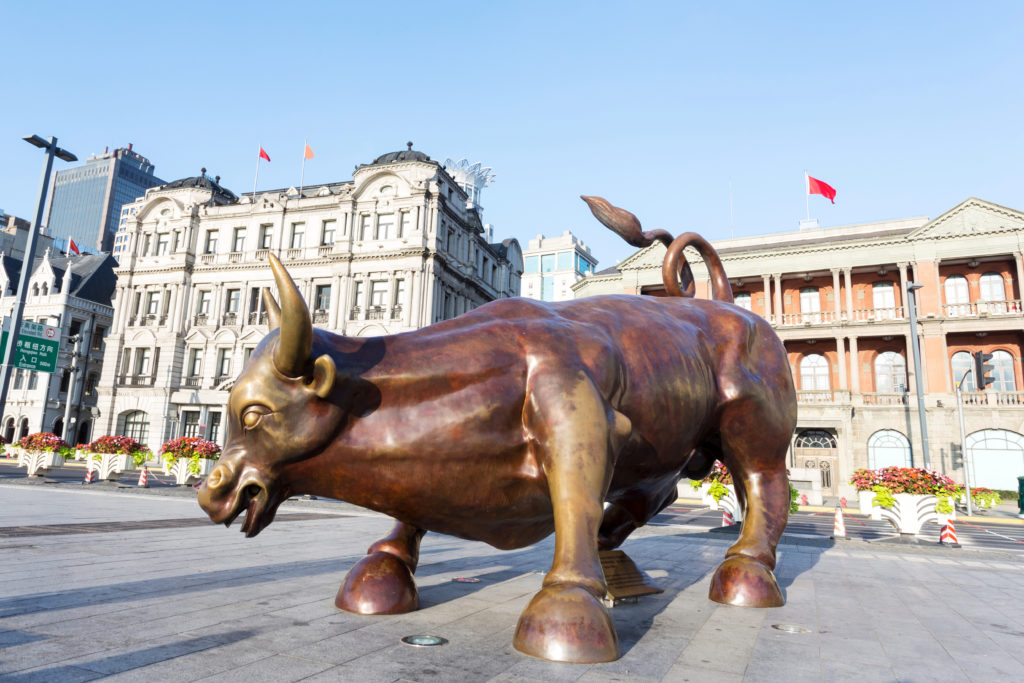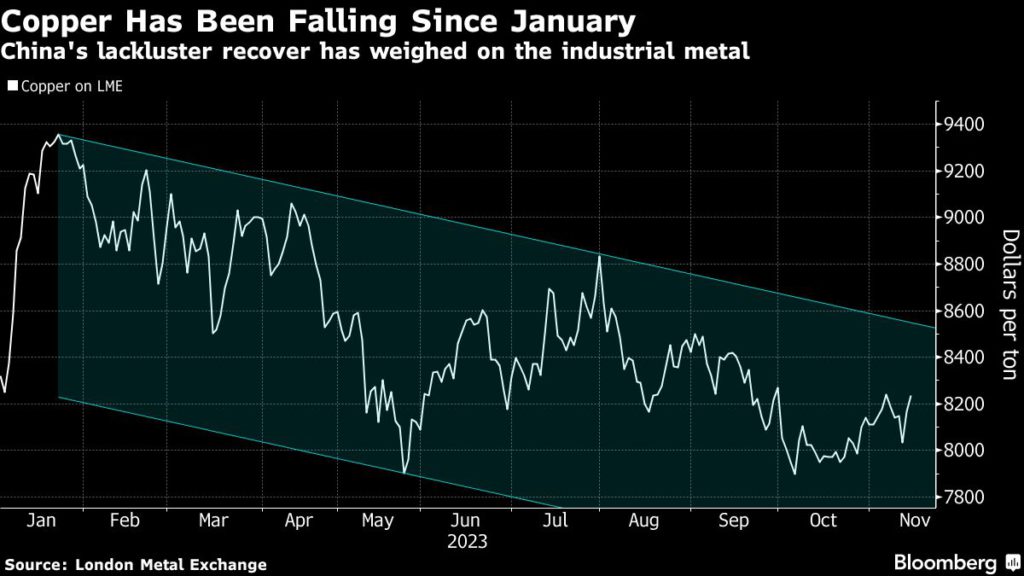
The global copper market will face a glut next year, according to one of China’s biggest traders of the metal, which will likely lead to further declines in the commodity that’s vital to the energy transition.
Shipments of copper ore from overseas mines should be sufficient to feed China’s smelters, despite the seemingly relentless expansion in their processing capacity, Wang Wei, head of copper trading at Shanghai Wooray Metals Group Co., said in an interview this week.
“We are not very optimistic about copper prices,” he said, speaking at the company’s headquarters in the former building of the now defunct Shanghai Metals Exchange. The market will be at its “loosest” next year, while more Chinese stimulus and a depletion of ore reserves should tighten conditions in the long run, he said.

Wang’s view tallies with onshore observers of the world’s largest copper market. Goldman Sachs Group Inc., meanwhile, is among others that have a more bullish take on expectations for more demand related to the energy transition from China and elsewhere.
After rallying sharply from November through mid-January on optimism China’s economy would take off after it got rid of Covid restrictions, copper has fallen steadily through 2023. Global monetary tightening and the weak Chinese recovery have weighed on the metal, despite recent efforts from Beijing to stimulate the economy.
Wooray, established in 2015, supplied nearly 2 million tons of refined copper to around 1,700 clients last year, according to the company. That’s about 15% of China’s total demand. It typically buys metal imported by large trading houses and sells it on to its customers, who are mainly fabricators.
The privately owned firm is gaining importance just as the government intensifies a crackdown on dubious commodities deals by state-owned companies. Wang said a “fully competitive” market should benefit Wooray.
At the same time, other private companies have felt the strain of a sagging economy. Maike Metals International Co., which until recently was responsible for more than a quarter of China’s copper imports, filed for bankruptcy this week after struggling with a liquidity crisis.
In China, the refined copper market will shift from a tight balance this year to a surplus of 600,000 tons in 2024 after China adds another 800,000 tons of processing capacity, Wang said.
There are bright spots for demand, though, particularly from China’s power grids and electric vehicle industry, which is offsetting weakness from the embattled property sector, he said.
The country’s refined copper consumption will rise more than 3% this year, compared with the 5% growth targeted by Beijing for the economy as a whole, Wang said. Copper use in new energy vehicles could amount to 600,000 tons this year, exceeding the 500,000 tons for traditional cars, he said.
Wang didn’t give any specific price forecasts but he did say that any rise in Chinese prices above 69,000 yuan ($9,513) a ton would likely be met by short-selling, or bets that prices would decline. Copper futures in Shanghai currently trade around 67,660 yuan a ton.
In terms of long-term supply dynamics, Wang said rising supplies of copper scrap in China are worth watching as white goods bought by the emerging middle classes that use copper approach the end of their life span.
Comments